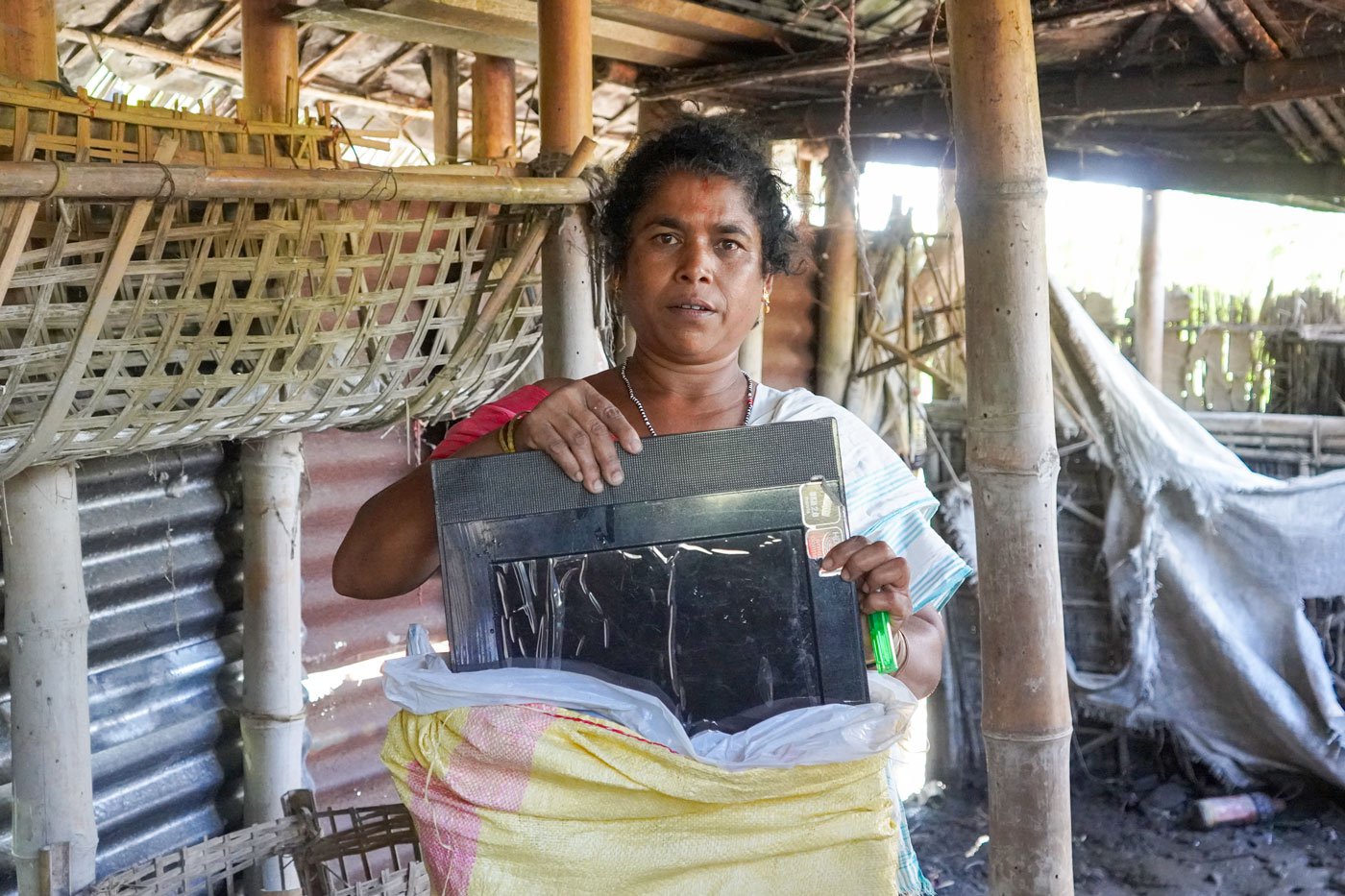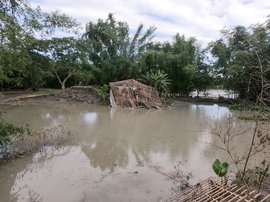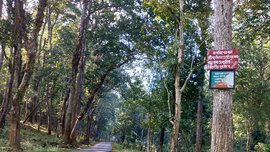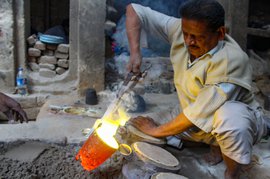“When the waters rise, our soul trembles,” says Hareswar Das. A resident of Bagribari in Assam, he says the village must always be on guard during the monsoon months when rising water levels in the nearby Puthimari river can devastate their homes and crops.
“We have to pack our clothes and be ready when it rains. Last time the floods destroyed both kutccha houses. New walls with bamboo and clay were raised again,” adds his wife, Sabitri Das.
Nirada Das says, “I put the [now damaged] TV in a sack and placed it on the roof.” The last television was also ruined by previous floods.
It was the night of June 16, 2023, and the rain was relentless. Residents used sandbags to repair a section of the embankment which had collapsed last year. Two days passed and the rain showed no signs of stopping. Bagribari and its neighbouring villages including Dhepargaon, Madoikata, Niz Kaurbaha, Khandikar, Bihapara and Lahapara, were on guard, fearing that the weakest segment of the embankment would be breached again.
Luckily, four days later the rain slowed, and the water also receded.
“When the embankment breaks it seems like a water bomb. It ravages everything in its way,” explains Hareswar Das who is a local teacher. Now retired, the 85-year-old taught Assamese in K. B. Deulkuchi Higher Secondary School.
He is of the firm view that the embankment constructed in 1965 has actually done more harm than good, “drowning instead of rejuvenating croplands.”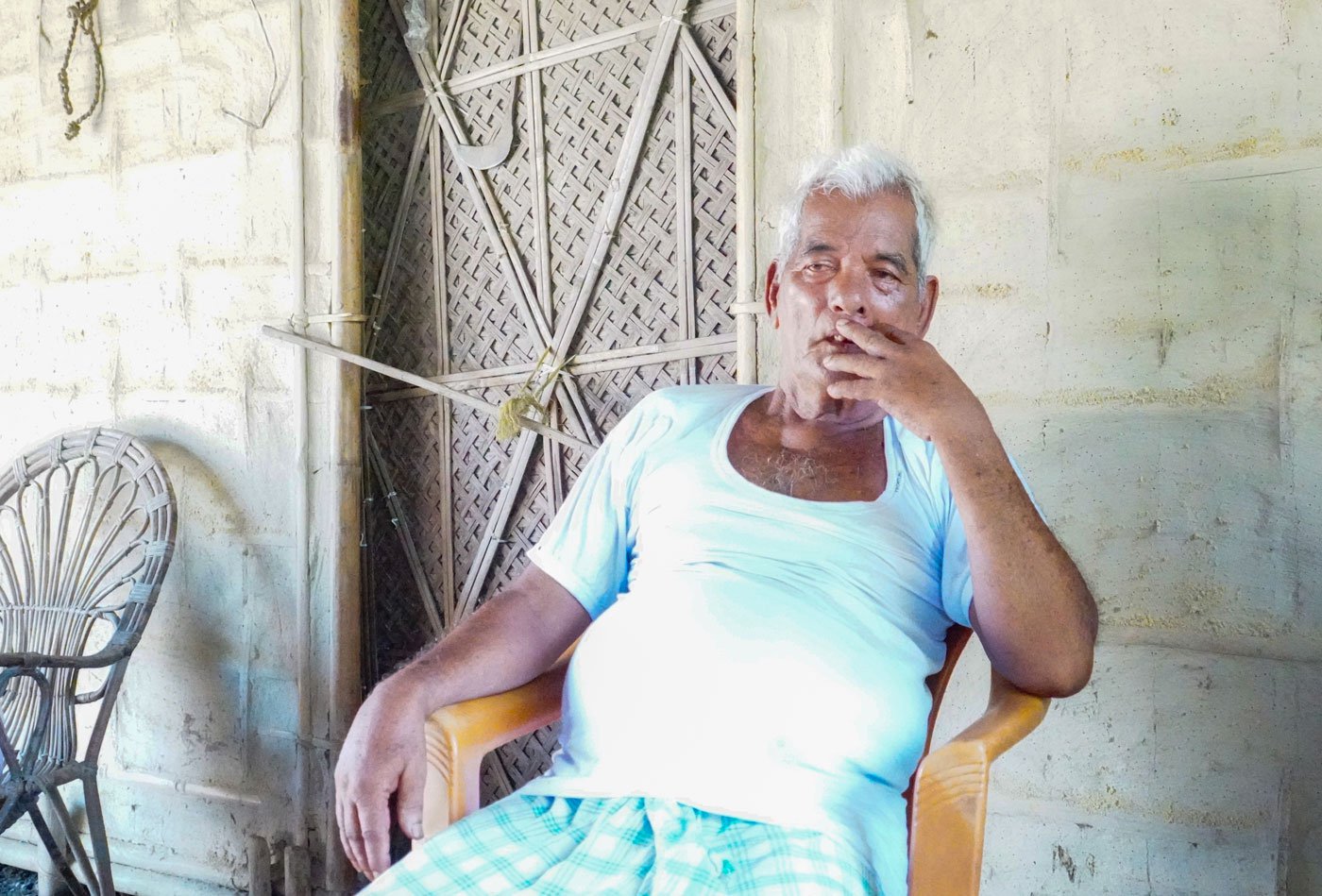
![His wife Sabitri (right) adds, 'The previous flood [2022] took away the two kutchha houses of ours. You see these clay walls, they are newly built; this month’s [June] incessant rain has damaged the chilly plants, spiny gourds and all other plants from our kitchen garden'](/media/images/02b-RUB09045-WR_and_PD-In_Bagribari-the_ri.max-1400x1120.jpg)
Retired school-teacher Hareswar Das, 85, (left) has witnessed 12 floods. 'When the embankment breaks it seems like a water bomb. It ravages everything in its way instead of rejuvenating croplands,' he says . His wife Sabitri (right) adds, 'The previous flood [2022] took away the two kutchha houses of ours. You see these clay walls, they are newly built; this month’s [June] incessant rain has damaged the chilly plants, spiny gourds and all other plants from our kitchen garden'
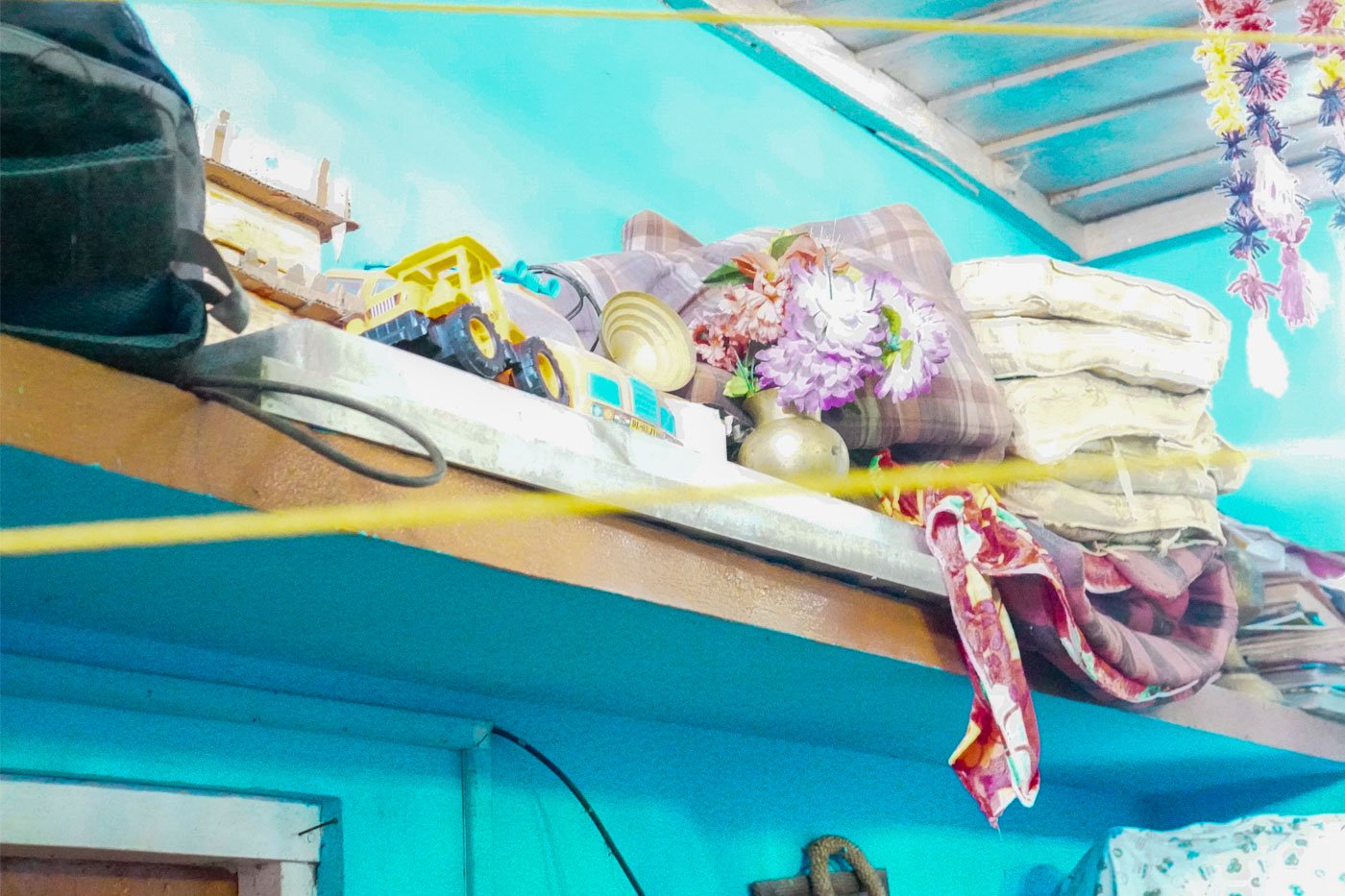
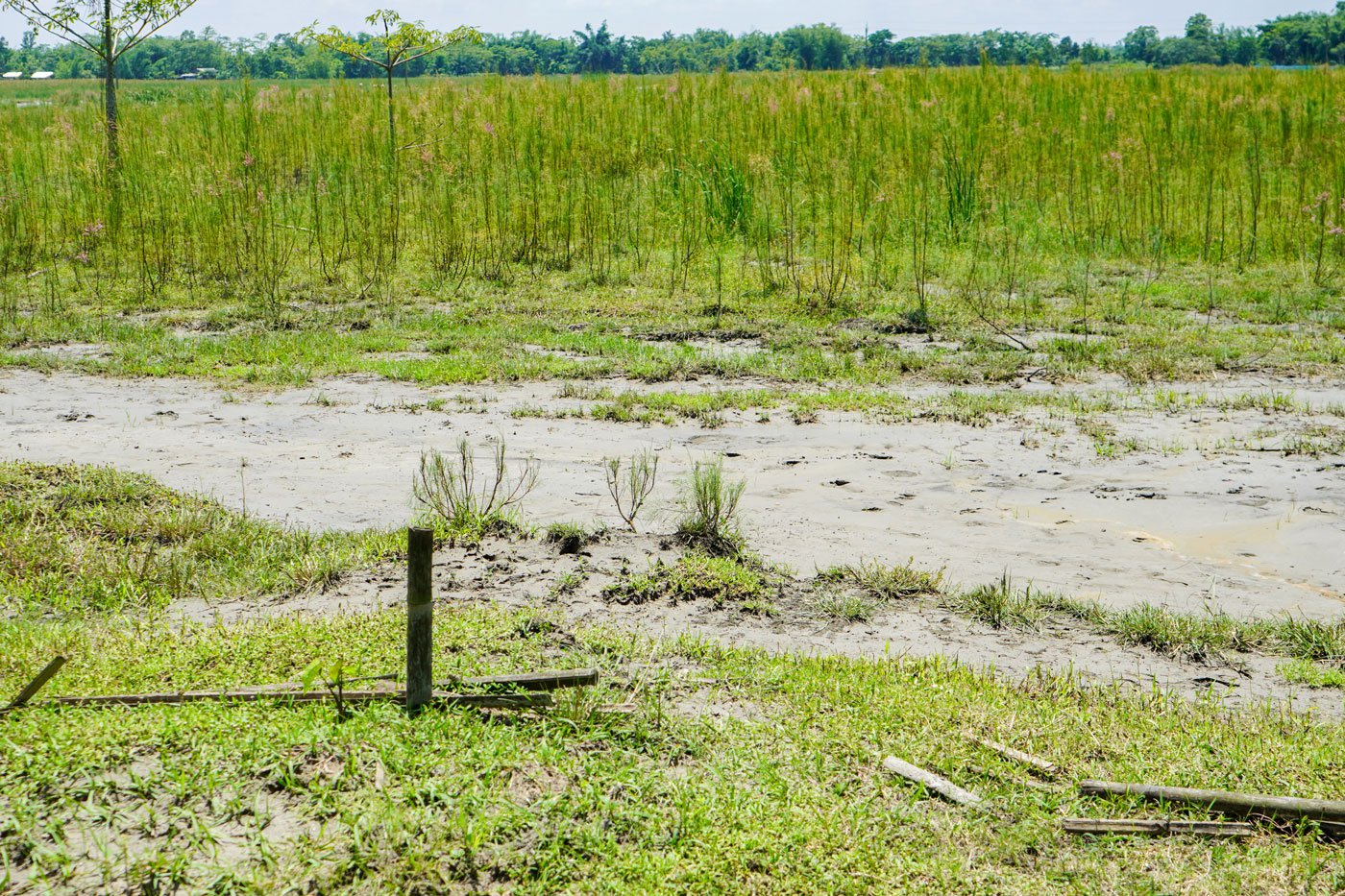
Left: Sabitri and family store things in high places to avoid damage. She has to keep everything ready and packed in case it rains. Right: Although it is time to sow seeds, not a single farmer in Bagribari has been able to do it because it is impossible to farm land covered in sand
Bagribari lies on the banks of the Puthimari river, which is 50 kilometres away from the annually flooding Brahmaputra. In the monsoon months, villagers spend sleepless nights in fear of rising water levels. Young members of the village stay awake all night during June, July and August here in Baksa district, monitoring the water at the embankment. “We spend five months a year fighting floods or living with the fear of floods,” adds Hareswar.
Jogamaya Das, a resident of the village points out that “The embankment has been collapsing at the same place almost every other monsoon for the past several decades.”
Which is probably why Hirakjyoti, Atul Das's son, has recently joined the Unarmed Branch of the Assam police as a constable. He has lost confidence in the construction and repairing of the embankment.
“The embankment is like Xunor koni pora haah [The duck that lays golden eggs],” he says. “Every time it collapses, parties and organisations arrive. The contractor builds the embankment. But it collapses again in the flood.” When the youth of the locality demand better repairs, says the 53-year-old, “they are threatened by the police them and forced them to stay silent.”
The fields, roads, and houses of Bagribari speak of the suffering of the people. And it does not seem as though it will end anytime soon. A 2015 report of the Inland Waterways Authority of India on the hydrographic survey of Puthimari river concluded that “embankment construction and repairing seems like permanent affair.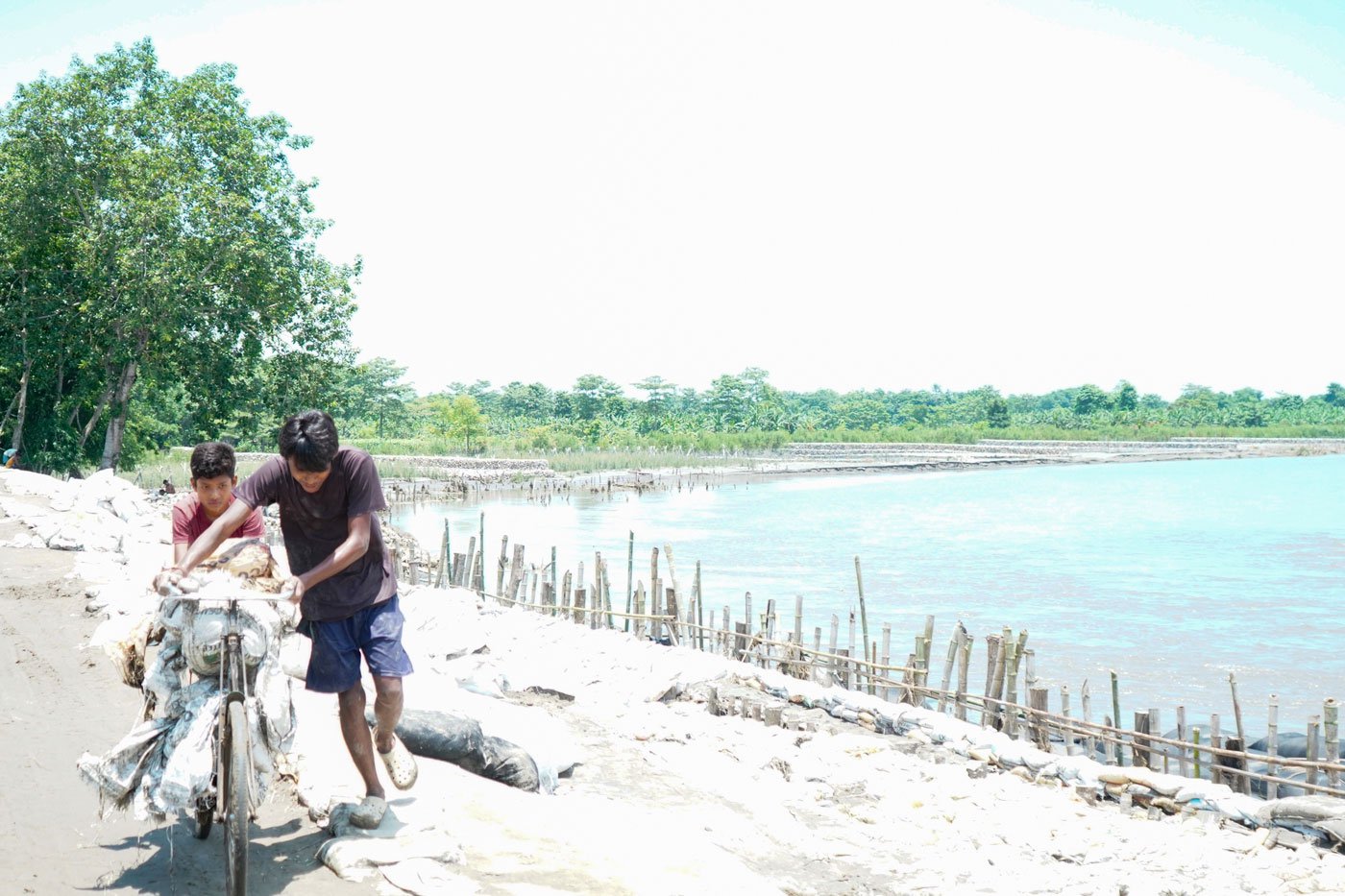
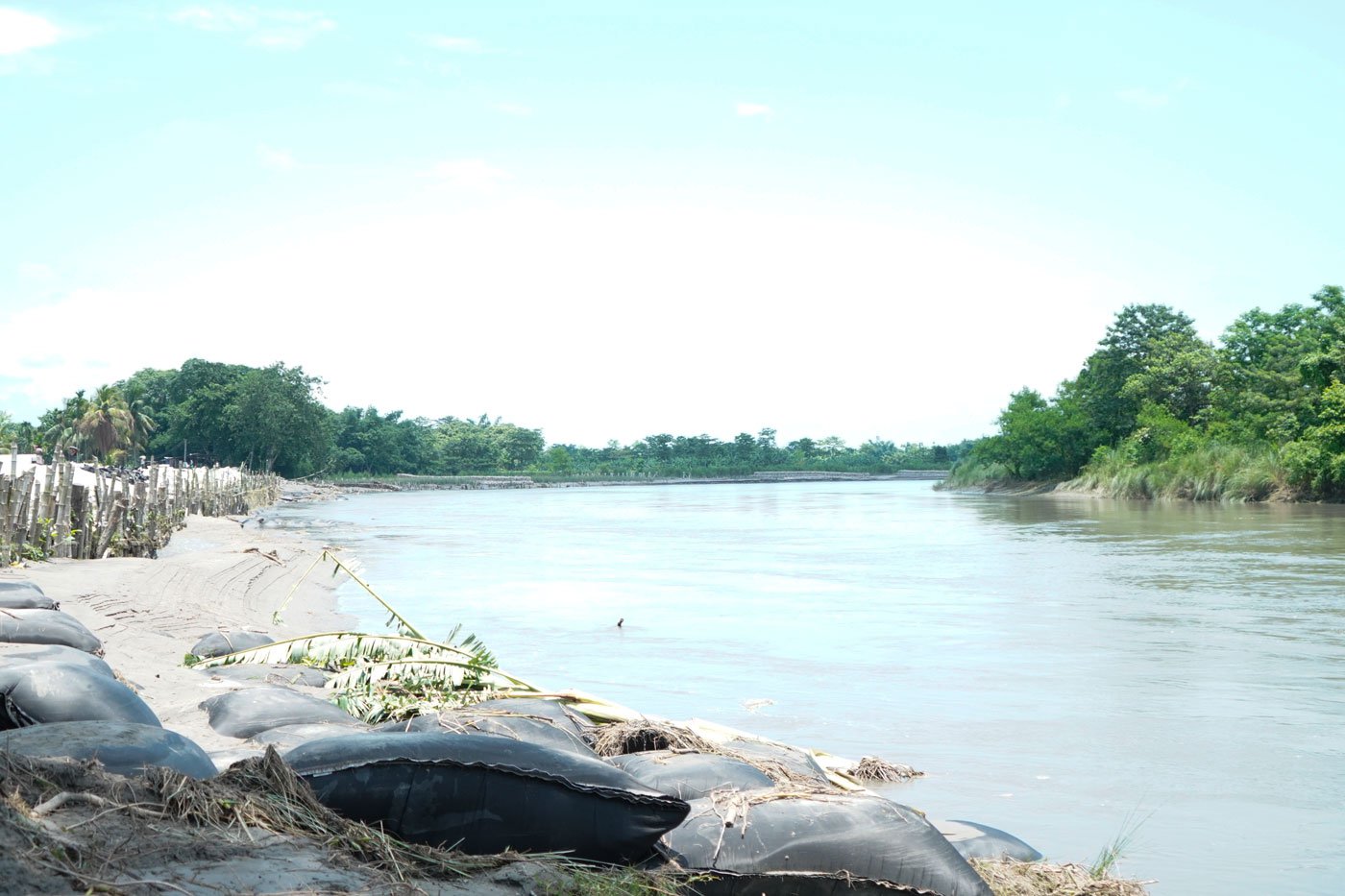
Left: Workmen from Bagribari placing sandbags below the embankment on the Puthimari river . Right: The State Water Resource Department uses geobags to resist erosion
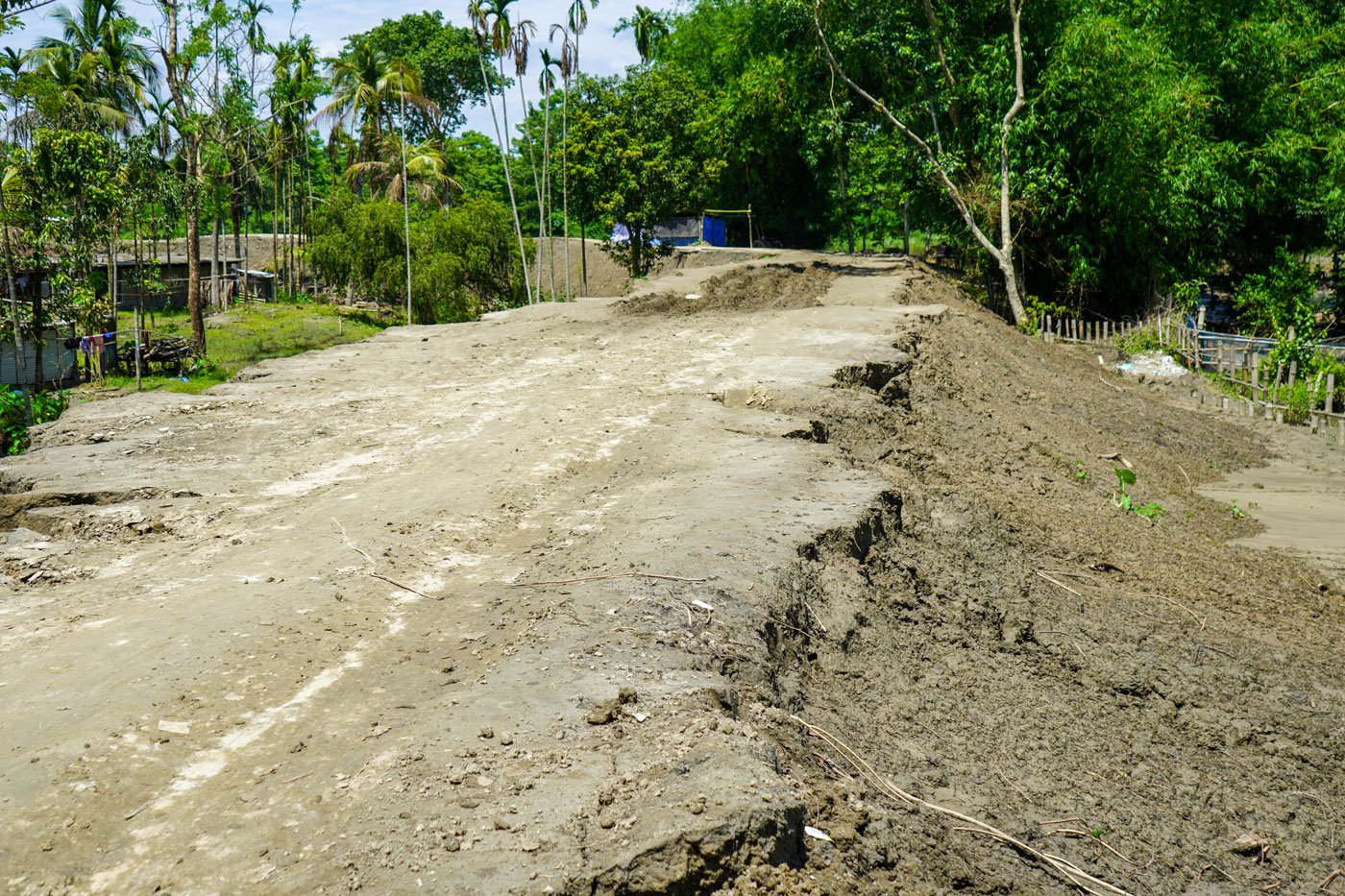
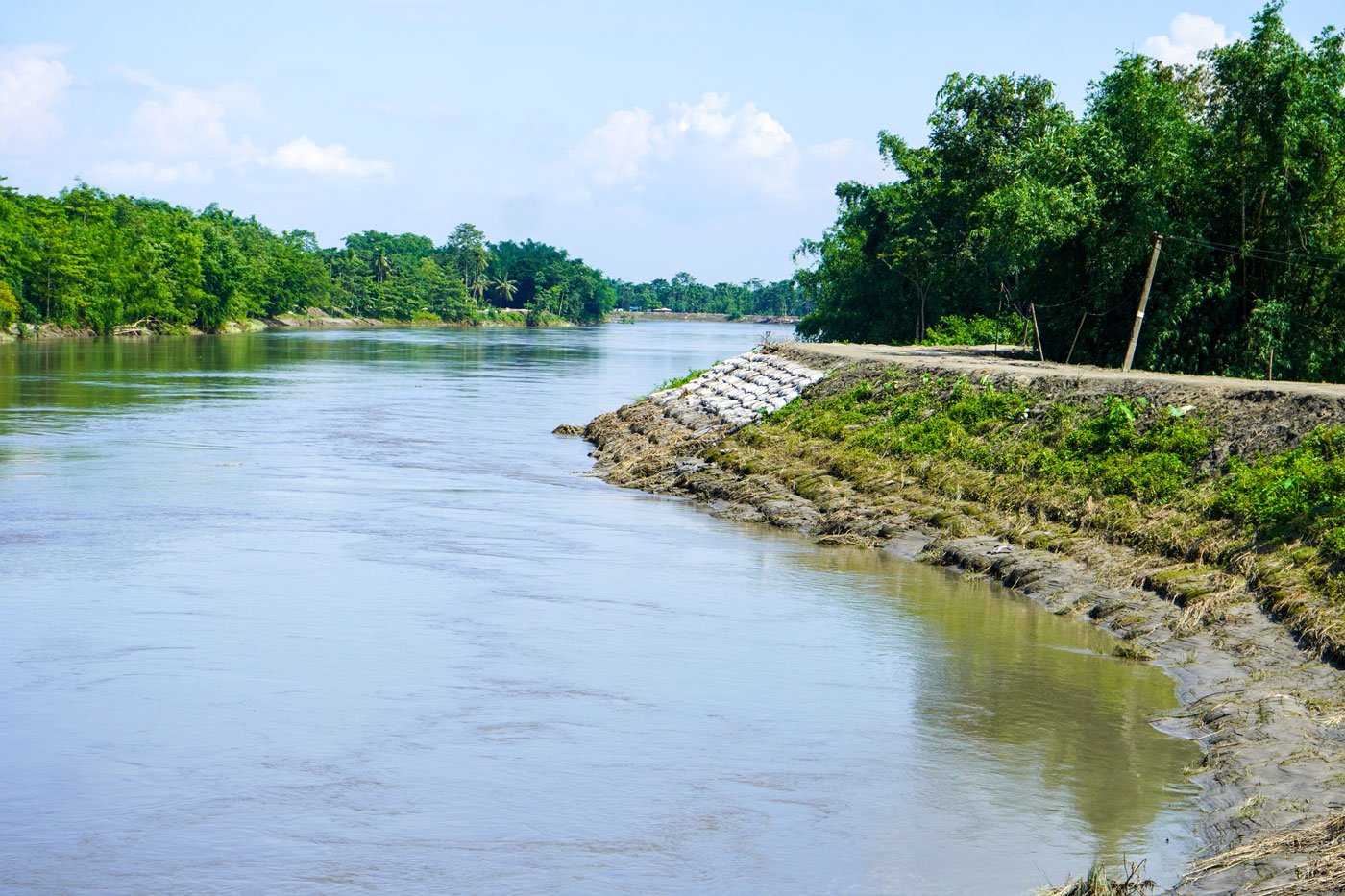
Left: 'I t seems that the embankment is a golden duck,' says Atul Das pointing out the waste of money and resources . Right: Sandbags used to uphold the weaker parts of the embankment where it broke and villages were flooded in 2021
*****
In 2022, Jogamaya Das and her husband Shambhuram had to cling to their windows for over eight hours when their house was flooded. That night, when the water reached their neck, the couple left their kuccha house and made their way next-door to the new house they were building under the Pradhan Mantri Awas Yojana (PMAY). Water had flooded this pucca house as well and the windows were their last hope for survival.
“It was a nightmare,” says Jogamaya, shadows of that dark night still visible on her face.
Standing now at the door of their flood-ravaged house, Jogamaya, who is around 40, recalls her experiences of the night of June 16, 2022. “My man [husband] repeatedly assured me that the water will recede, the embankment won't break. I was scared, but I fell asleep. Suddenly, I woke up startled by an insect bite and found that the bed was almost floating,” she says.
The couple, who belong to the Koch-Rajbonshi community like most other residents of the village, live about 200 meters from the main northern bank of Puthimari, a tributary of Brahmaputra.
“I couldn't see anything in the dark,” says Jogamaya, describing their ordeal. “We managed to get to the window. There have been floods before, but I have never seen so much water in my life. I could feel insects and snakes lurking near me. I was looking at my man and holding on to the window frame as tightly as I could,” she adds. With the arrival of the rescue team, they were finally saved at 11:00 a.m. from the ordeal which had begun at 2:45 a.m.
'The embankment [on the Puthimari river] has been collapsing at the same place almost every other monsoon for the past several decades'
Exhausted by annual expenses for rebuilding homes, villagers are unwilling to repair their houses ravaged after the floods and this year's incessant rainfall. Several families are now living on the embankment in makeshift tents, having lost their homes to the flood or too scared to go back.
Madhabi Das, 42 and her husband Dandeswar Das, 53 had managed to repair their house which had been damaged in the last flood. But they cannot live there in peace. “When the water rose, we came up to the embankment. I don't want to take a risk this time,” Madhabi says.
For those living on the embankment, finding water to drink is a major problem. Madhabi says that after the floods, many of the tube wells were buried under the sand. Showing us a bucket full of empty plastic bottles, she says, “There is a lot of iron in the water. We filter the water near the tube wells and carry it to the embankment in buckets and bottles.”
“There is no point in farming or building houses here. Floods take everything away again and again”, says Atul’s wife Nirada Das. “We bought a TV twice. Both were damaged by the floods,” she says, leaning against a bamboo post in their baranda .
The main occupation of the residents of Bagribari, which has a population of 739 (Census 2011), was farming. But that has changed because of the floods and the sand that the water leaves behind, making the land impossible to cultivate.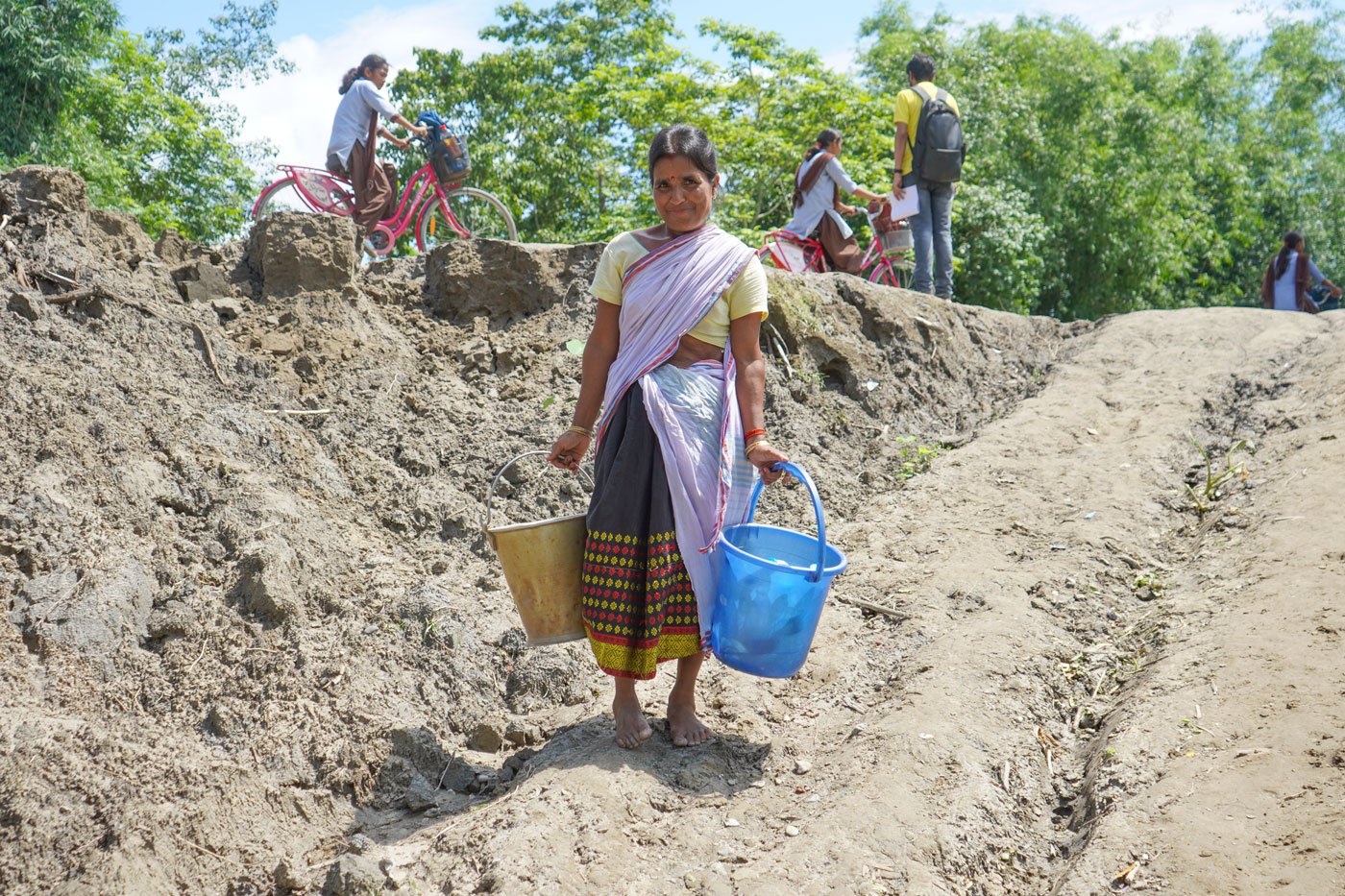
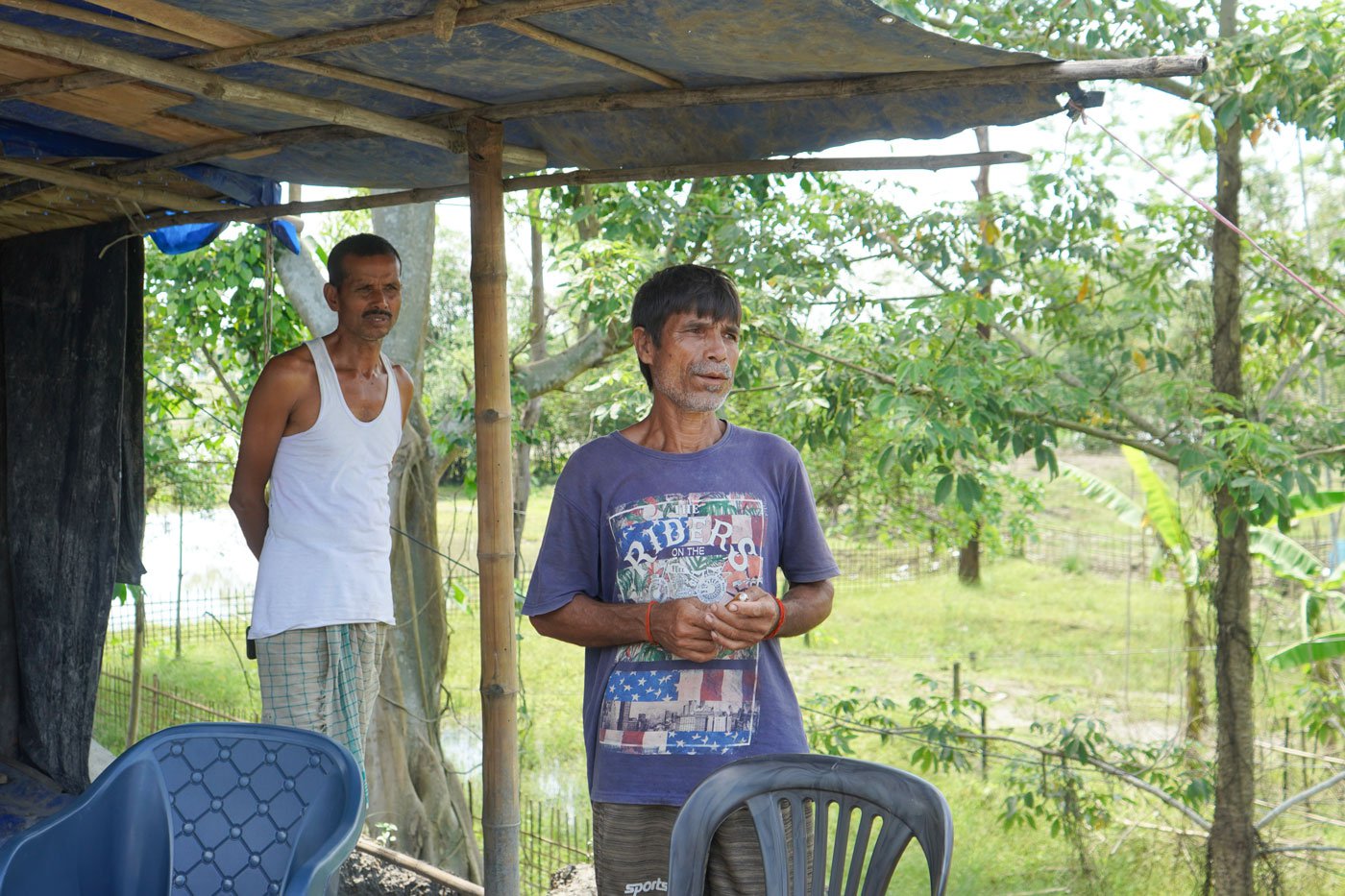
Left: Madhabi Das descends from the embankment to fetch water from a sand filter at her house. Since June 2023, she has had to make this journey to get drinking water. Right: 'When the water rose, we came up to the embankment. I don't want to take a risk this time,’ says Dandeswar (purple t-shirt), who works as farmer and a mason in between the cropping seasons. Standing behind him is Dwijen Das
![Left: 'We bought a TV twice. Both were damaged by the floods. I have put the [second damaged] TV in a sack and put it on the roof,' says Nirada.](/media/images/07a-RUB09152_copy-WR_and_PD-In_Bagribari-t.max-1400x1120.jpg)
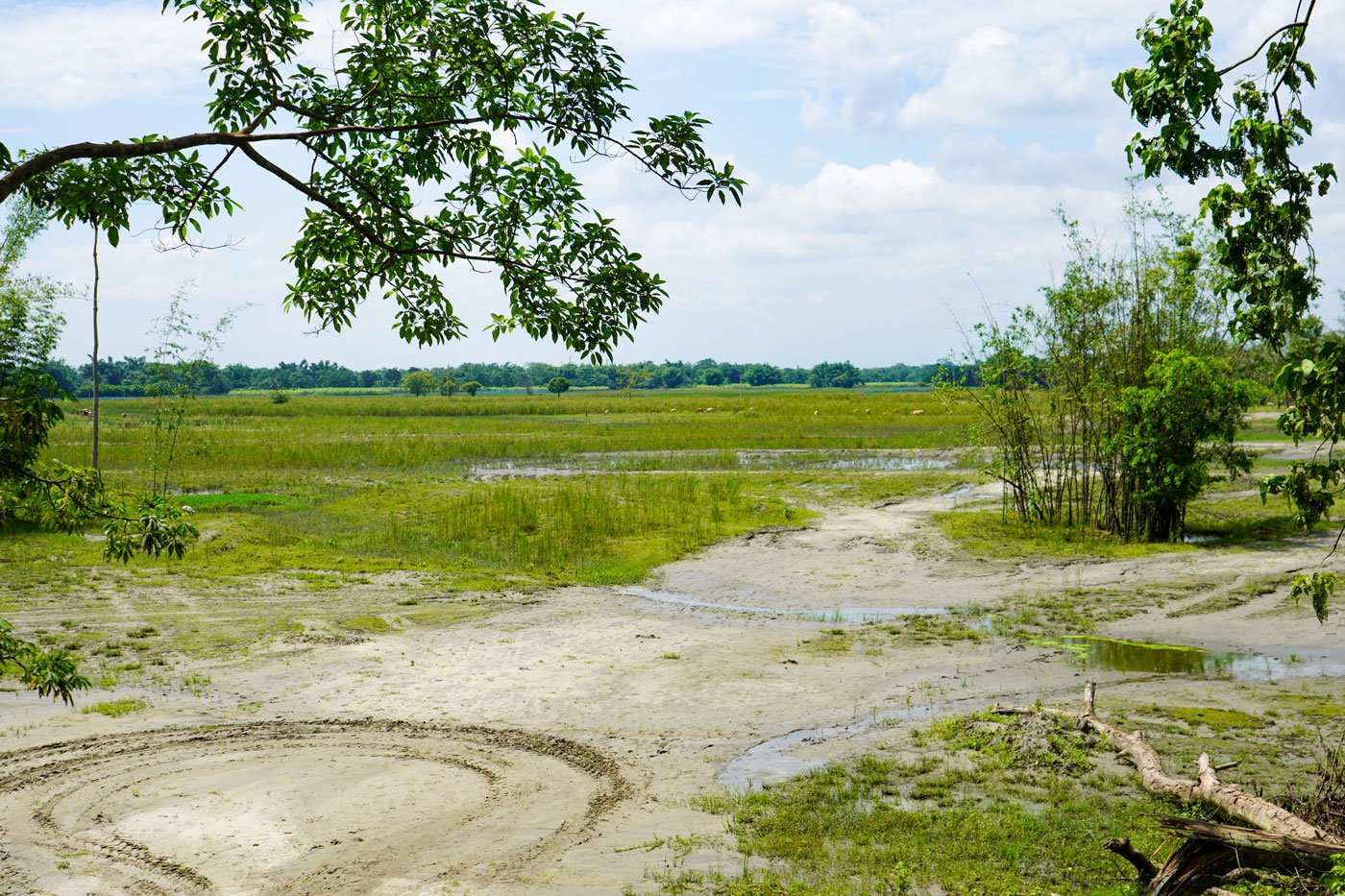
Left: 'We bought a TV twice. Both were damaged by the floods. I have put the [second damaged] TV in a sack and put it on the roof,' says Nirada. Right: The sowing season has not started as the land is covered in sand
*****
“Our fathers came here in the hope of more farming land.” says Hareswar, who moved with his parents as a young boy from Guiya village in the district of Kamrup. The family settled on the upper side of the river in Bagribari. “There was very little population in this lush green area. They [adults] cut down the shrubs and cleared the land and got as much land as they wanted to cultivate. But now, we cannot farm even though we have land,” he points out.
Last year (2022), Hareswar had already sown the paddy seeds and was about to transplant them in the field when the flood came. Eight bighas (around 2.6 acres) of his farmland went under water and the saplings rotted in the field before they could be transplanted.
“This time too, I sowed some seeds, but the rising water destroyed everything. I won’t farm anymore,” Hareswar says with a sigh. Incessant rain in June this year has damaged their kitchen garden, destroying chilli, spiny gourd and other plants.
Among the many families who have
had to quit farming is the family of Samindra Das. “We used to have 10
bigha
[3.3 acres] of farmland. There is no sign of that field today, it has been
buried in thick layers of sand,” Samindra says. “This time, due to heavy
rainfall, water was leaking from the embankment just behind our house,” adds
the 53-year-old. “As the water in the river rose, we went back to the tent [a makeshift shelter made of bamboo
posts and a tarpaulin].”
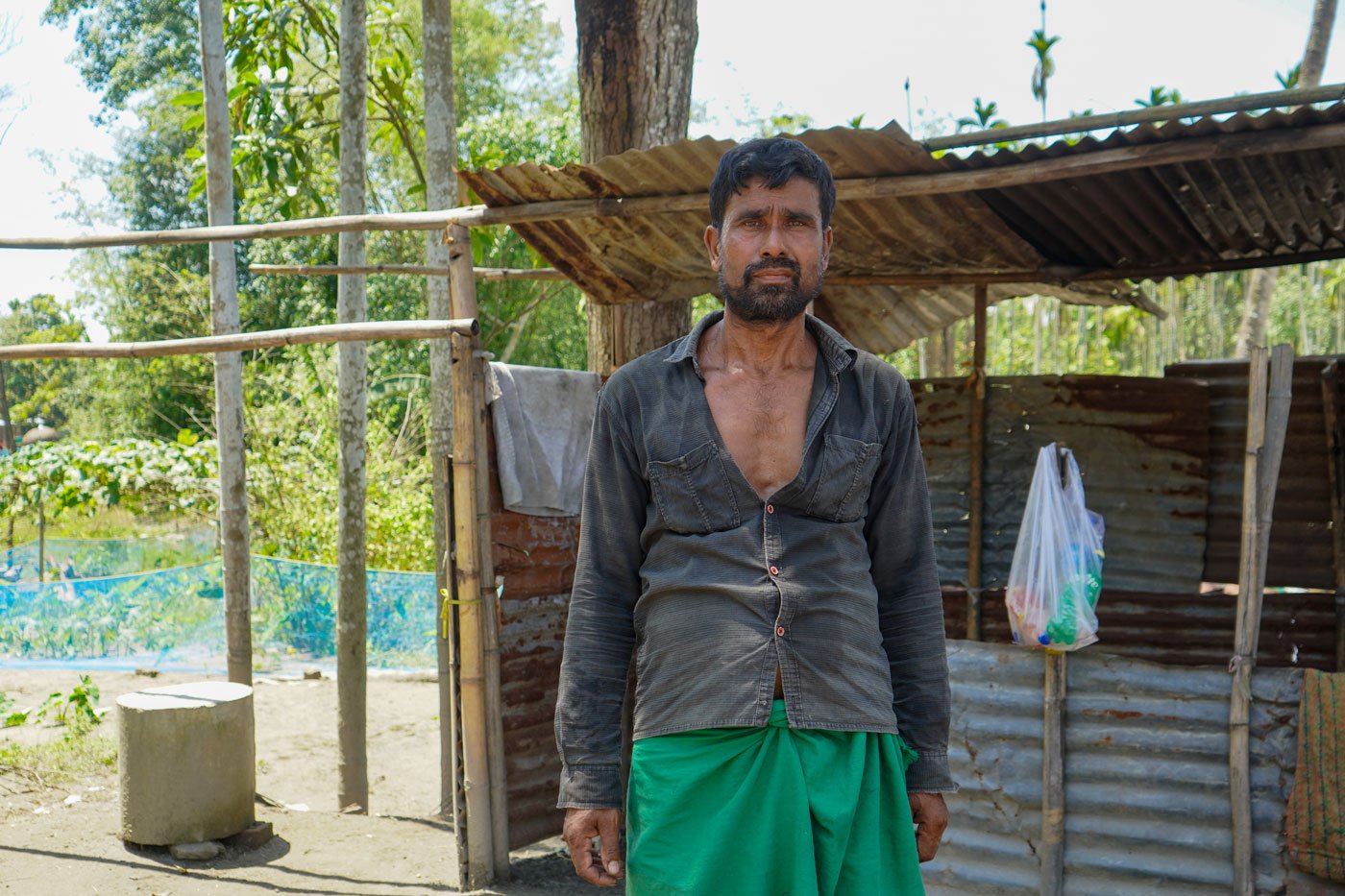
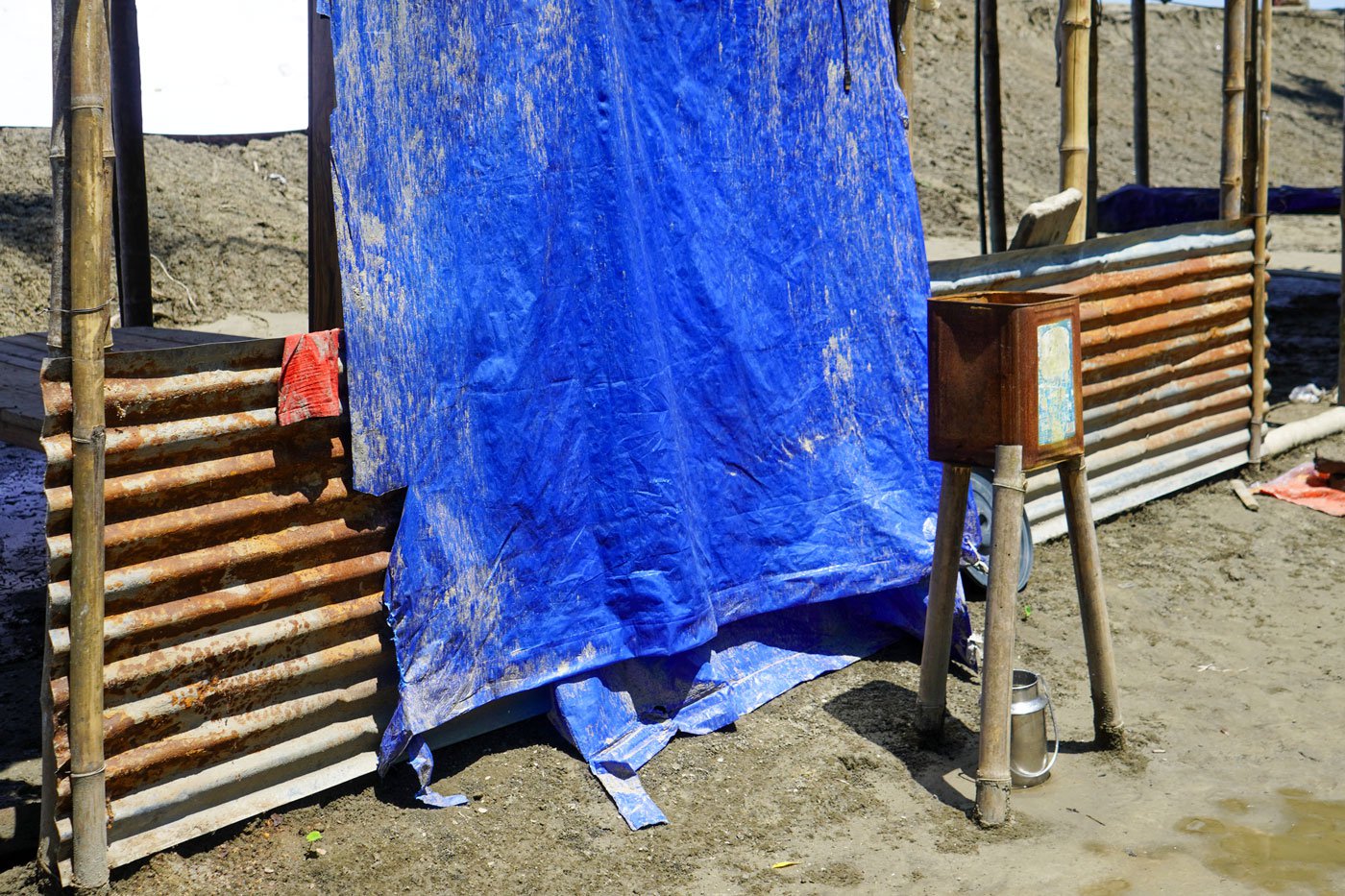
Left: ' We had 10 bigha land, now there is no trace of it; it has turned into a hillock of sand,' says Samindar Nath Das. Right: A traditional sand-charcoal filter in front of his flood-ravaged house. Because of the high iron level, you cannot drink unfiltered water here
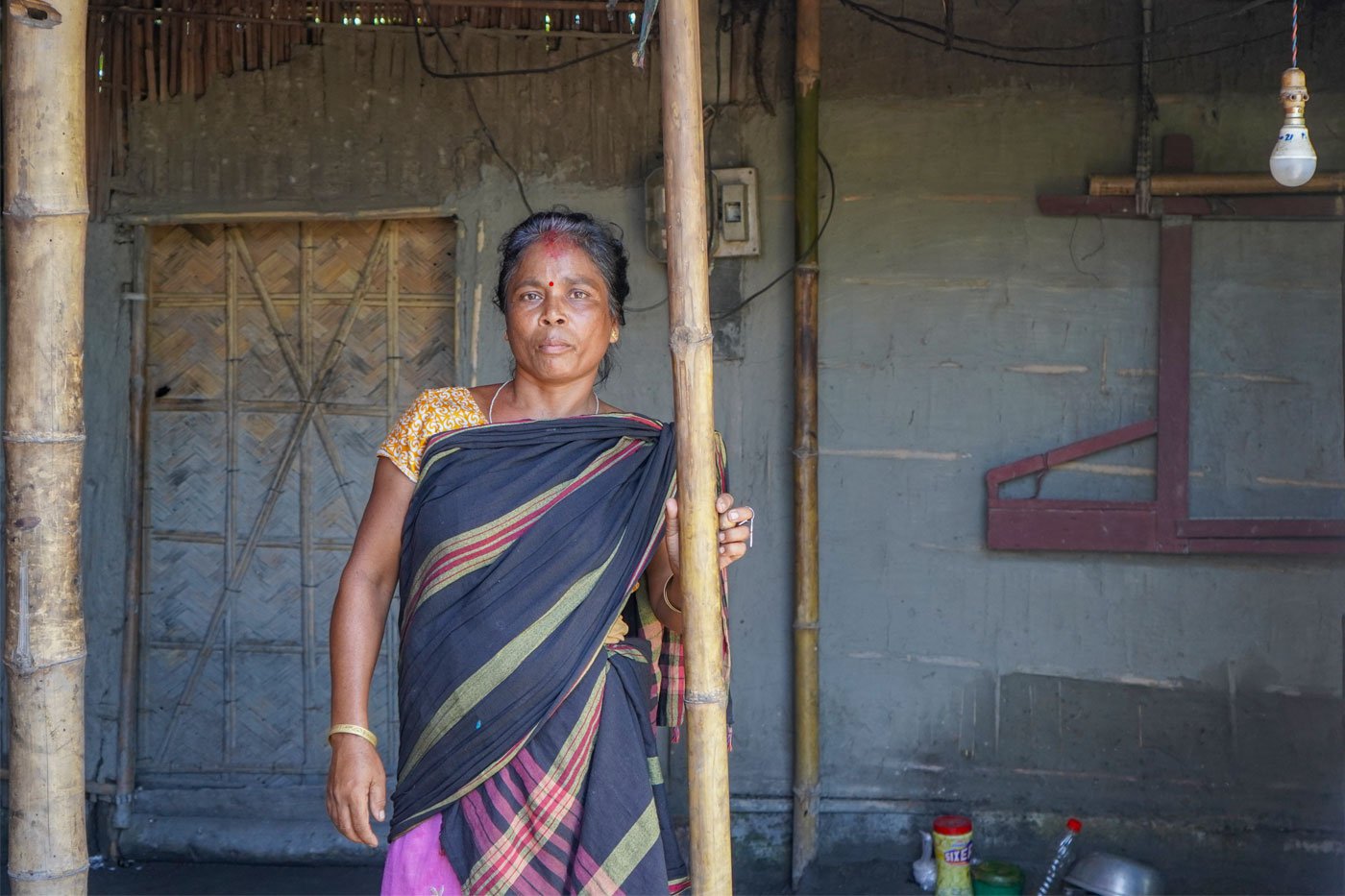
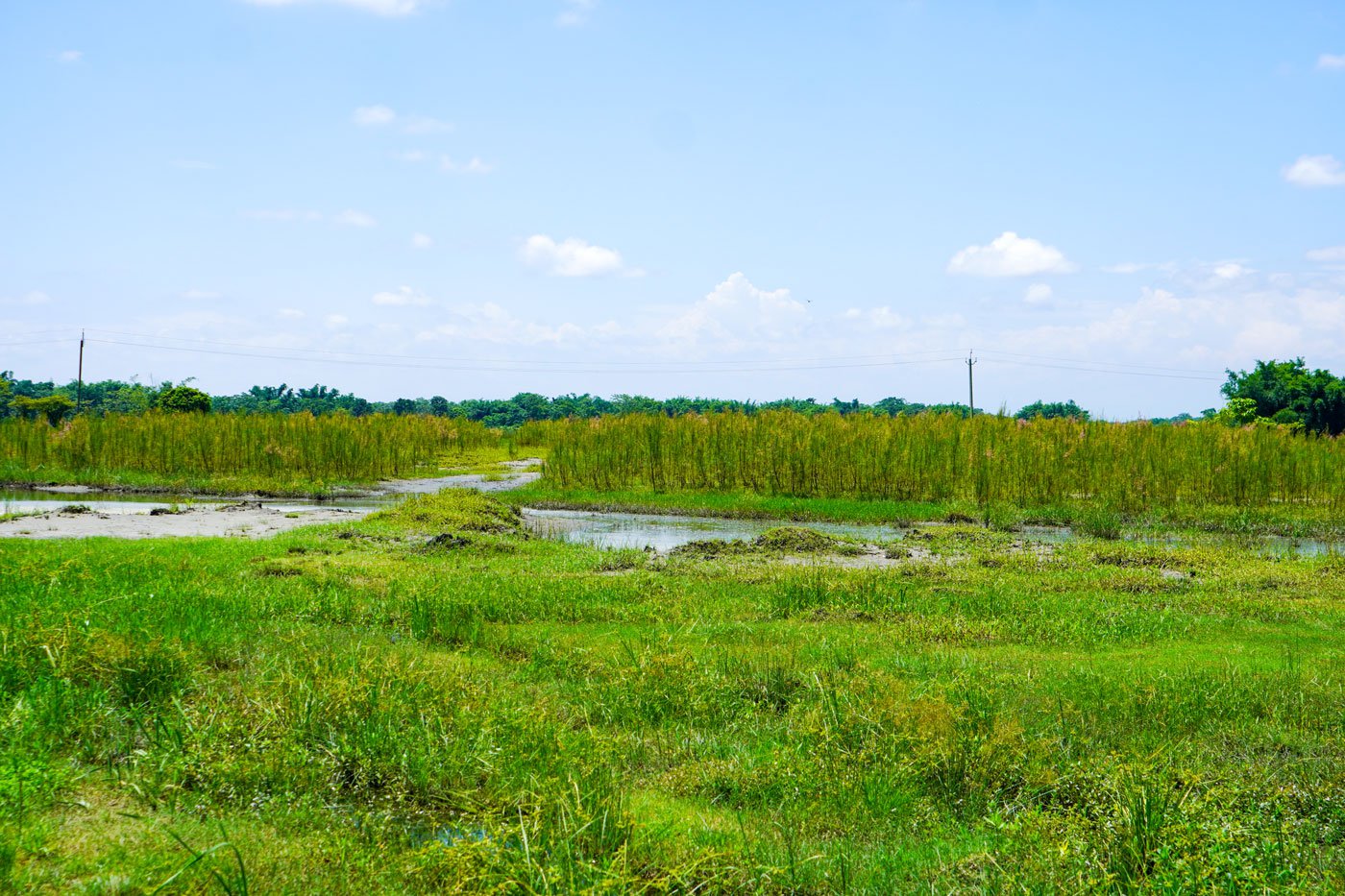
Left: 'Al l I have seen since I came here after getting married to Sambhuram in 2001 is flood,' says Jogamaya. Right: When the 2022 flood buried their paddy fields in sand, Jogamaya and her husband Shambhuram Das had to move to daily wage work
Jogamaya and Shambhuram’s family used to own three bighas (roughly an acre) of farmland where they mainly cultivated paddy and occasionally mustard. Jogamaya recalls that at the time of her wedding 22 years ago, this village, 50 kilometres from Guwahati, was a lush cropland. Now, there are only mounds of sand.
When the land became a desert, Shambhuram had to quit farming and find other work. Like many others in Bagribari, he became a daily wage labourer. Now he earns around Rs. 350 per day doing odd jobs in neighbouring villages. “He loved to farm,” says Jogamaya.
But work is always not available. Jogamaya is a domestic worker and earns around Rs.100–150 a day. Once upon a time, she used to work in the fields transplanting paddy seedlings. Sometimes, she would also work on someone else’s land for some extra cash. Besides farming, Jogamaya is also adept at weaving. She owns her own loom, weaving gamusa (hand-woven towel) and chador (wrapper worn by Assamese women) which was also a source of income.
With cultivation no longer a viable option, she had become more dependent on the loom. But the river has played spoilsport again. “I was weaving on adhiya [on the agreement giving the owner half the total produce] until last year,” says Jogamaya, “But only that handloom frame remains. The flood has taken away spools, bobbins, everything.’’
With the scarcity of work and uncertainty of income, says Jogamaya, it has become very difficult to support their son’s education – Rajib, 15, is a student of Class 10 at Kaur Baha Navamilan High School. Last year, right before this incident, his parents had sent him to a relative’s house near the embankment. The couple also have two daughters – Dhritimani and Nitumani. Both are married and live in Katanipara and Kendukona respectively.*****
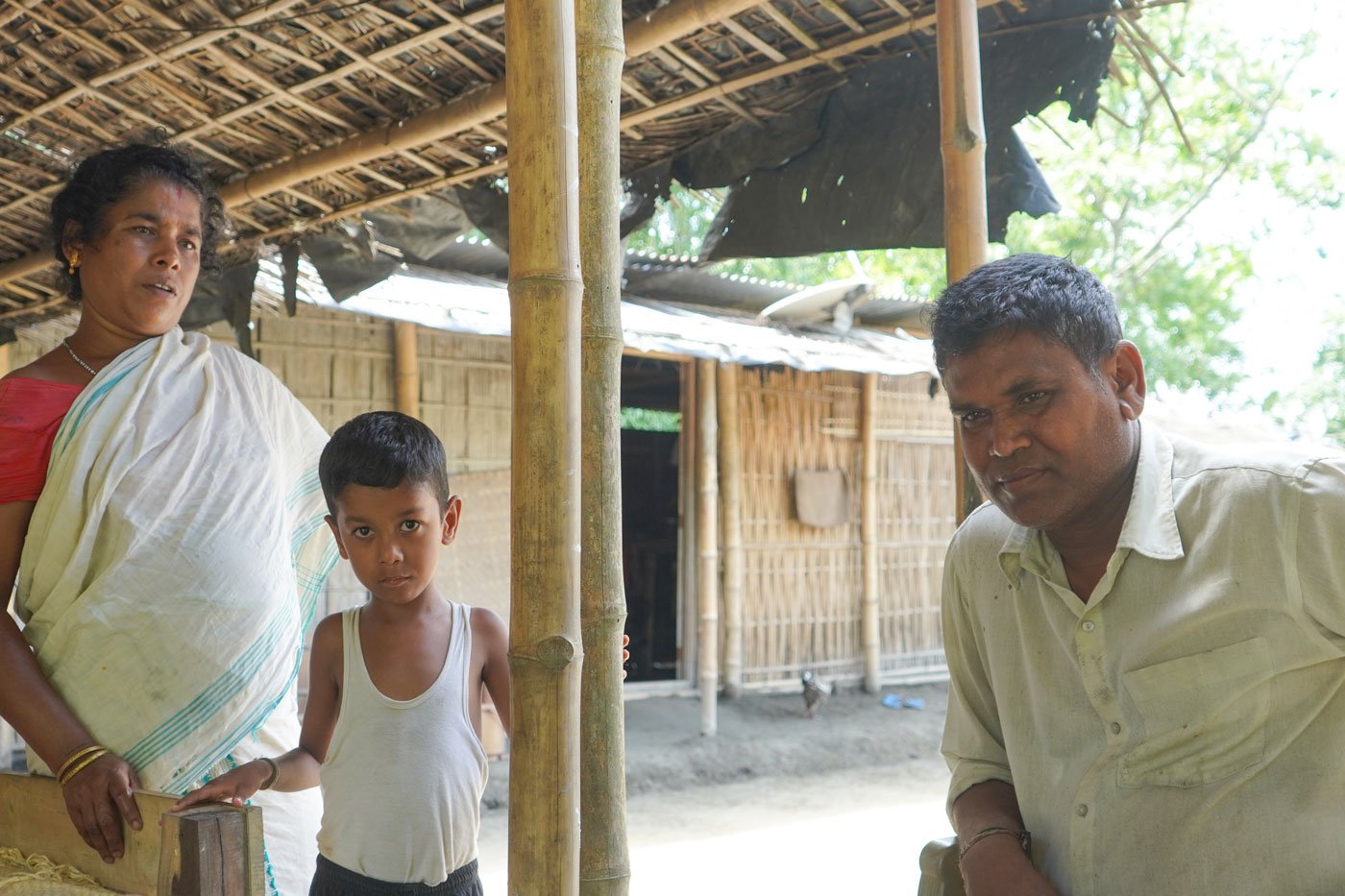
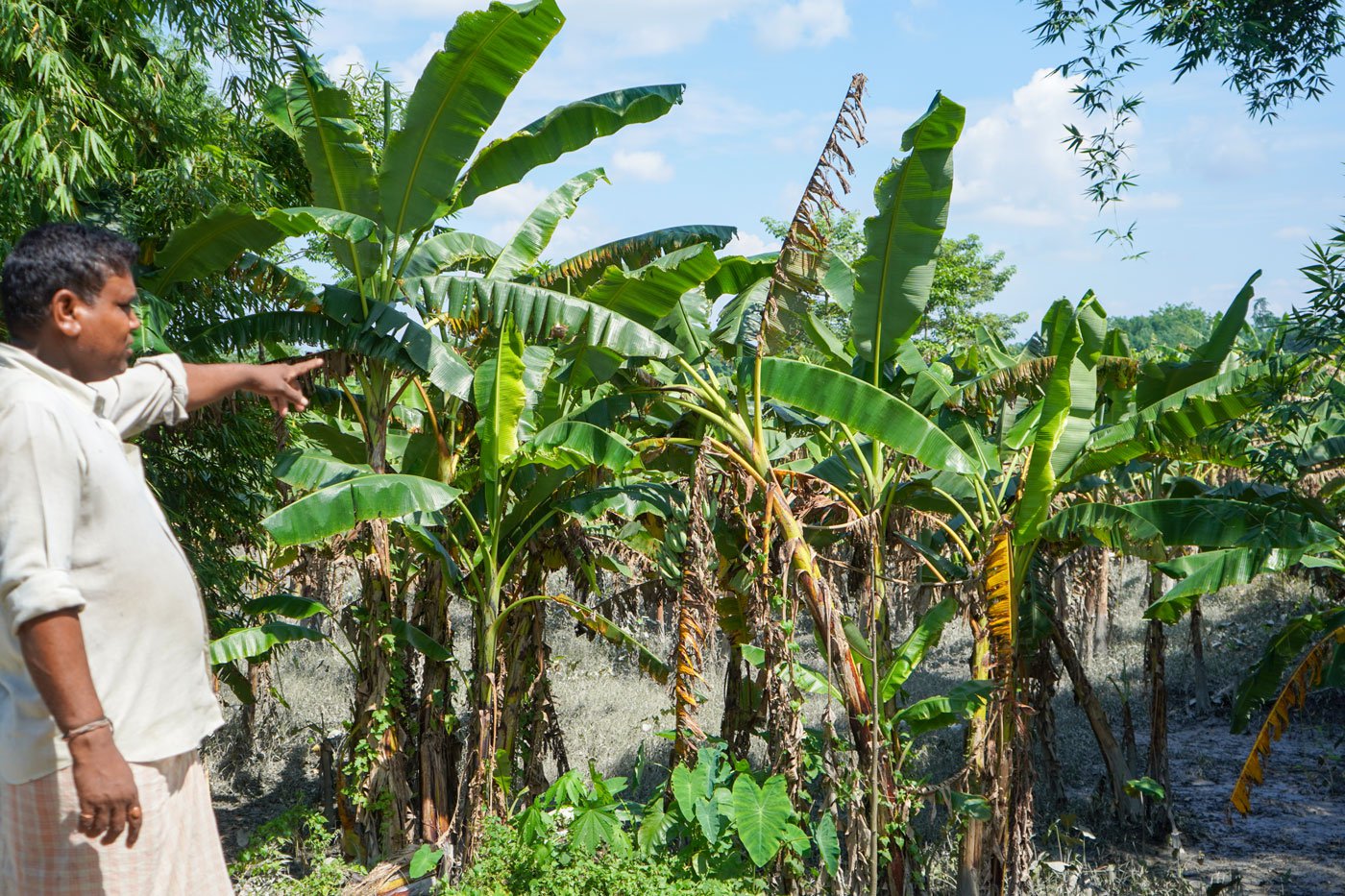
Left:
Atul Das and
his wife Nirada have been fighting floods all their life. Right:
Atul shows us his
banana grove which was ravaged by the overflowing river during the third week
of June, 2023. He had cultivated lemon along with other vegetables which were also
damaged by the floods
Frequent floods and inundation by the Puthimari river have left Atul Das's family disoriented. “I planted bananas on 3.5 bighas [1.1 acres] and lemons on one bigha [0.33 acres] of land. On one bigha , I planted pumpkins and white gourds. This time the river water rose and all the crops were destroyed,” Atul says. After a few weeks, two-thirds of the crops were revived.
According to Atul, many villagers have had to give up farming as a result of poor road connectivity. For those who want to sell their produce, the journey to the markets have become near-impossible due to the collapse of the embankment which damages the roads.
“I used to take our produce to Rangia and Guwahati,” says Atul. “There was a time when I loaded a van with our farm produce like bananas and lemon at night. Early next morning, at around 5:00 a.m, I would reach and sell the crop at the Fancy Bazar in Guwahati and arrive home by eight o'clock in the morning the same day.” But this has become impossible after the last flood.
“I also used to ferry my produce by boat to Dhulabari. But what can I say! The embankment has collapsed several times since 2001. After the 2022 flood, it took five months to repair,” Atul adds.
“The floods have destroyed us all,” rues Atul’s mother Prabhabala Das, recalling the chaos caused by the collapsing of the embankment.
However, as we climb the embankment to take our leave, her son smiles at us. “Last time too you came when there was a flood. Visit us on a good day,” he says, “I will send you vegetables from our farm.”